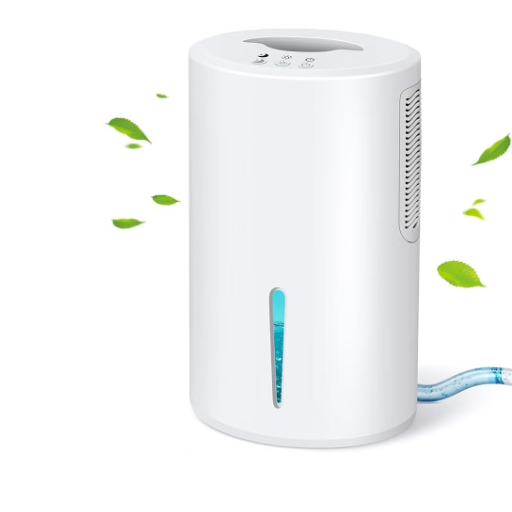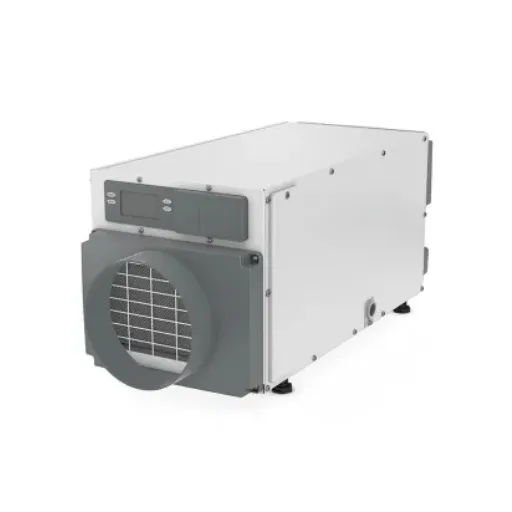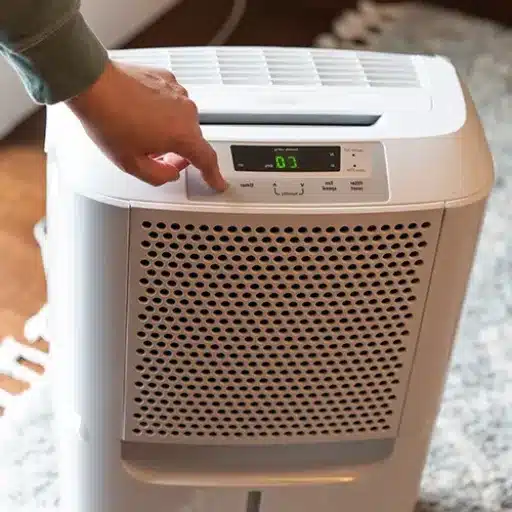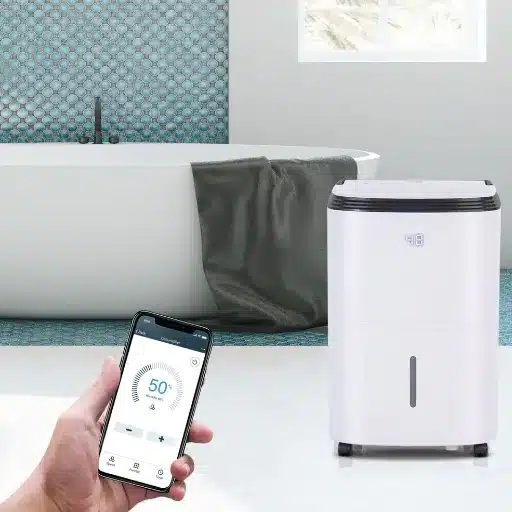Humidity in bathrooms can lead to unwanted issues like mold, mildew, and musty odors, making it crucial to maintain a dry and fresh environment. But with so many dehumidifiers on the market, finding the perfect one for a small bathroom can feel overwhelming. That’s why we’ve created this guide to help you discover the best small bathroom dehumidifiers available today. Whether you’re dealing with persistent dampness or seeking to prevent potential problems, this article will cover top recommendations tailored to your needs. Keep reading to find the ideal solution for a fresher, healthier bathroom space!
Importance of Dehumidifiers in Small Bathrooms
Combatting Mold and Mildew
Mold and mildew thrive best in moist and wet environments. Small bathrooms provide just the ideal location for their growth. Higher humidity levels, lesser ventilation, and direct exposure to moisture from showering or bathing ensure the presence of perfect conditions for these fungi. The mold and mildew would contribute to foul odors and staining of walls or ceilings; health effects can even include allergic reactions or respiratory problems.
The other very effective way to fight the mold and mildew in the small bathroom is to use a dehumidifier. Dehumidifiers draw moisture out of the air, keeping relative humidity below the ideal threshold for fungal growth, which is generally below 50%. The mold and mildew then find it difficult to exist and multiply. These days, dehumidifiers have added conveniences such as auto-shutoff modes, compact flat designs, and low noise levels suitable for tight bathroom areas.
Other than these, combine the use of a dehumidifier with some preventive steps for maximum benefits. Clean surfaces in the bathroom on a regular basis, so that any spores of mold will be washed away. Use an exhaust fan or open a window for ventilation. Finally, fix any leaky pipes and cure all damp spots speedily. These simple steps will give you the ability to keep the mold and mildew at bay and will create a rather comfortable and healthy space in your small bathroom.
Maintaining Healthy Humidity Levels
Keeping a balanced humidity level is very important to ensure the comfort and safety of the individuals inside. In smaller bathrooms, excess moisture could cause mold and mildew growth. The correct indoor relative humidity level should be maintained somewhere between 30% and 50%. Microorganisms will be able to thrive if the humidity level is higher, while levels lower than this will cause discomfort, like dry skin and irritation of the respiratory tract.
Start with good ventilation so that these levels can stay optimal. An exhaust fan should be used during and after a shower to rid the air of excess moisture. If there are windows, they can be opened for some fresh air. In a windowless bathroom, leaving the door open after usage may help disperse some of the humidity. Do not forget that wet towels or clothes can cause more problems by providing moisture in the surroundings when left there.
Balancing humidity can also be done with the assistance of a dehumidifier or other moisture-absorbing agents. A small, portable dehumidifier designed for tight spaces can bring moisture levels down effectively. Alternatively, silica gel packs or similar inexpensive substances can be used for moisture absorption. Regular maintenance of such devices, together with general cleanliness and the quick repair of any leaks, will considerably assist in preserving good air quality and in safeguarding your area against long-term damage.
Enhancing Bathroom Comfort
Both functionality and atmosphere have to be taken into account for a comfortable bathroom environment. Open the space by decluttering it. Use storage solutions like floating shelves, cabinets, or baskets to keep your essentials organized and within reach. A clean bathroom increases the feeling of comfort and is easier to clean.
To warm up your bathroom and make it feel cozy, introduce soft elements- bath mats, plush towels, and shower curtains in calming colors or patterns. Give yourself some mood lighting with options to go bright when applying makeup or doing other grooming activities and dimmer when it’s time to unwind.
Further, natural elements in a bathroom go a long way in making it a pleasant environment. Add a splash of green from small potted plants or flowers that survive in humidity, like ferns or peace lilies. Aromatic candles or diffusers with relaxing scents like lavender or eucalyptus will lend to the spa feel, so set your bathroom apart as an enviable place. These simple yet effective touches will elevate a functional bathroom to a calming retreat.
Comparative Analysis of Features
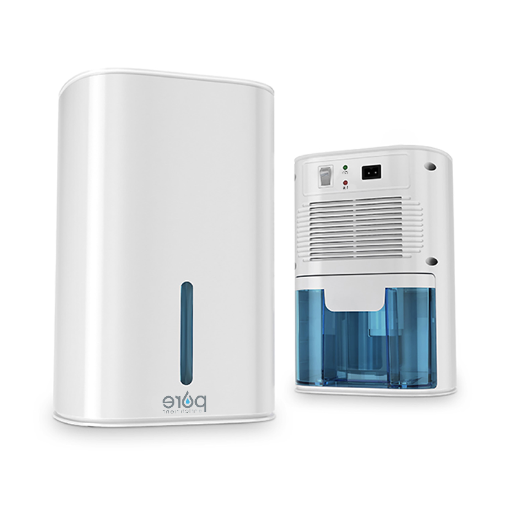
Size and Portability
When discussing size and portability, it is also very important to account for the specific needs of the user and environment. Compact designs usually appeal to those who need to be on the go or have limited space. For example, the smaller size of a device or tool tends to favor its traveling use or an environment where it may be fairly limited in storage. Portability is one of the main features in contemporary product design and certainly gains popularity alongside the growing preference for convenience and adaptability.
Another thing to consider is functionality against size. Smaller machines generally mean better portability and storage, but they compromise performance or sacrifice some features to achieve portability. The bigger ones, on the other hand, most of the time tend to offer better capacity/functionality but might be less usable for on-the-go clients. Knowing the trade-offs and compromises is essential to ensure the right product is chosen for different kinds of scenarios.
Technological advances in recent years have narrowed the gap between size and performance. Various kinds of innovative features have been cleverly fitted into many compact products without adversely affecting their portability. For example, light and foldable components are gaining popularity in the world of small gadgets. Also, manufacturers went for materials that are strong but lightweight-aluminum and carbon fiber-to sort out overall portability. Consumers benefit from such technological developments by enjoying the efficiency of those products in addition to their ease of life.
Noise Levels and Energy Efficiency
Considering the noise levels and energy-efficiency rating of modern devices, I look for solutions that offer a fine balance between performance and comfort. Most of my search criteria go toward products constructed with advanced soundproofing technology to ensure an almost negligible noise level while in operation. A quiet machine is particularly important when one desires a quiet atmosphere to work in, relax in, or sleep. Noise reduction elevates client satisfaction and serves as an additional testament to the quality thought that went into the making of the product.
As regards energy efficiency, my chief concern remains what sort of performance a product can excel in while consuming the least amount of power. An energy-efficient device lowers electricity bills, conserves the environment, and generally displays some form of certification like ENERGY STAR ratings, which gives consumers a relative measure of quality. Whenever I purchase products that consume less energy in performing their functions, I feel that I have contributed to lowering my carbon footprint a little but a very meaningful step towards conserving the environment.
In a nutshell, I think low noise level combined with high energy efficiency represents the nucleus of innovation in today’s modern devices. The manufacturers who are able to pool these attributes together demonstrate their dedication toward user satisfaction and environmental consciousness. Buying such products for me is synonymous with achieving comfort and responsibility toward sustainable living.
Pros and Cons of Recommended Products
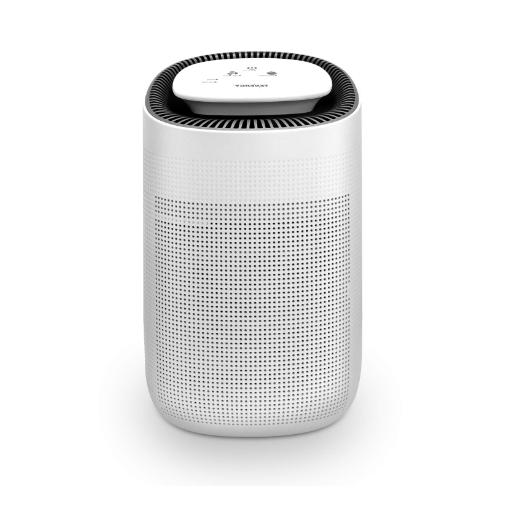
Midea Dehumidifier Pros and Cons
Pros:
- Energy Efficient: Bear Energy-Start Certification, which means the Midea Dehumidifier consumes less energy while still removing excess moisture.
- Quiet Operation: The minimum noise generated is 51 decibels, which is hardly audible and can be used in bedrooms, living rooms, and offices.
- Heavy Duty Moisture Removal: It can remove up to 50 pints of water from the air daily (according to 2019 DOE standards). Hence, it can work even in great humidity.
- User-friendliness: It comes with an easy-to-use digital control panel that contains a 24-hour timer, a washable filter, and an auto-restart feature.
- Compact and Portable: Since it is light, it is easy to carry from one room to another; talking about portability, its ergonomic handle with integrated wheels is also helpful.
- Continuous Drain Option: This option allows you the convenience of attaching a drain hose so the machine can run all the time, which means less draining of the tank.
Cons:
- Infrequent Emptying of Small Tank: The water tank could be emptied regularly, depending on conditions of use and in highly humid locations.
- Plastic Build: While some users reject the external design for being plastic-rich, the construction is sturdy.
- Drain Hose Too Short: The included hose for continuous draining may be too short for some setups, which then may require purchasing a longer one.
- Temperature Sensitivity: Performance may slightly decline in colder environments, as it’s optimized for moderate room temperatures.
- Maintenance Required: The dehumidifier filter must be cleaned regularly to maintain its efficiency and air quality.
The Midea Dehumidifier strikes a balanced mix of performance, easy operation, and energy efficiency addressing common dehumidifier-related gripes. This makes it a top contender for those homes where moisture control and sustainability are important.
Ivation 13-Pint Dehumidifier Advantages and Disadvantages
The Ivation 13-Pint Dehumidifier is a small and efficient moisture-management solution for small rooms such as bedrooms, offices, or bathrooms. Here are the main advantages and disadvantages:
Advantages:
- Compact and Lightweight Design: Being tiny and portable, it fits well into small rooms and can be moved about as required.
- Energy Efficient: Works well at moisture control by consuming very little power. In the long run, it therefore helps minimize energy bills.
- Quiet Operation: This dehumidifier has been engineered with noise reduction in mind, allowing it to be used in areas where noise is a concern.
- Easy-to-Use Controls: Consists of a digital panel that can be used to set the humidity level as well as monitor its output.
- Continuous Drain Option: Does provides a hose connection for a continuous drainage setup, thus lessening how often you have to empty it.
Disadvantages:
- Limited Capacity: Its 13-pint capacity overwhelms bigger spaces or places with high humidity, thus requiring more frequent maintenance.
- Smaller Water Tank: When not utilizing the continuous drainage system, the tank size requires you to regularly empty it.
- Basic Features: Lacks some advanced features like Wi-Fi capability or an air-purifying option present on some pricier models.
- Not Ideal for Extreme Conditions: Performs well in moderately humid situations but compromises if it has to operate under conditions of high moisture levels or poor insulation.
The Ivation 13-Pint Dehumidifier is a handy, cost-effective product designed for smaller spaces yet very convenient and efficient. However, the capacity and features would be insufficient for customers with larger space requirements or demanding applications. It generally does well in typical house use that prioritizes simplicity and portability.
Buying Guide for Small Bathroom Dehumidifiers
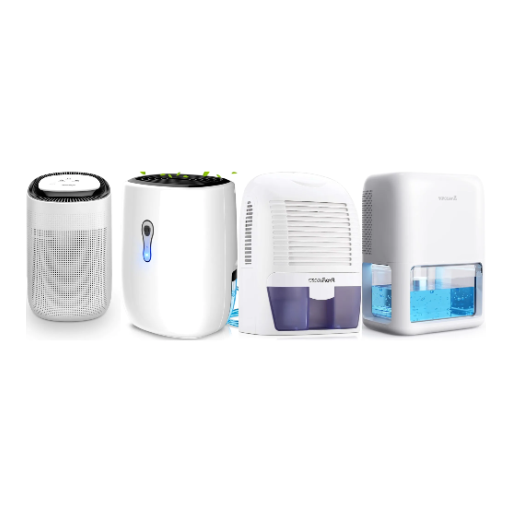
Key Factors to Consider
There are some critical considerations for ensuring that the dehumidifier will perform properly and is suited to the setting of a small bath. These considerations are the following:
- Size and Capacity: The capacity of the dehumidifier must match the size of the bathroom. This means compact models with a capacity of 13 pints or less are best for bathrooms, as they can handle humidity effectively without taking up much space.
- Moisture Removal Rate: Find out how much moisture the unit can remove per day. About 12 to 20 pints per day usually does well for a small bathroom with steam and humidity.
- Noise Levels: A bathroom dehumidifier should operate silently, especially if used overnight or in shared spaces. Models with noise levels below 50 decibels are preferable.
- User-Friendly Features: Features such as automatic shut-off, a built-in timer, and adjustable humidity settings may be considered. These features lead to enhanced ease of use and more energy efficiency.
- Size and Portability: Ideally, a dehumidifier for a small bathroom should be of a compact size and lightweight. Some models come equipped with handles or wheels, enhancing their portability.
- Energy Efficiency: Choosing an energy-efficient dehumidifier means lower electricity bills in return for good performance. The best models would be Energy Star-certified units.
- Drainage Options: Some dehumidifiers work with detachable water tanks, whereas others have the convenience of continuous drainage through a hose.
By concentrating on similar factors, one can be assured to pick a dehumidifier that adequately meets the requirements of the bathroom, thus attaining comfort and functionality in the long run.
Understanding Water Tank Capacity
When purchasing a dehumidifier, water tank capacity is a consideration because it measures efficiency and usability. Water tank capacity means the capacity of a device in which water collects. For bathroom dehumidifiers, smaller tank capacities might be sufficient (1-2 liters for mild humidity), whereas bathrooms with heavy moisture buildup might require dehumidifiers with larger tanks. Of course, a bigger tank will mean that one does not have to empty the tank as often; however, this may make the unit somewhat unwieldy and restrict the locations where it may be put.
Most important are the frequency with which the machine is used and the humidity levels in the bathroom. If the device is used in a humid environment, the water tank in a small dehumidifier would fill fast, demanding frequent attention. Features such as an automatic shut-off will prevent overrun of the water tank and provide an alarm to visitors when to empty it, so these are quite convenient settings. While the continuous drainage option in dehumidifiers assures minimum maintenance in places with heavy humidity, it requires the drain to be present near the device for proper working.
Water levels are clearly marked and indicated on many modern dehumidifiers, making it easy to keep an eye on. Several more sophisticated models may even be linked to a mobile application that provides real-time updates about tank status. Understanding the basics of water tank capacities and how they relate to everyday use helps the user align their needs on functionality and ease of use to enable an ever-so-comfortable and dry bathroom interior.
Maintenance and Ease of Use
Modern dehumidifiers prioritize user convenience in their design, making them easy to maintain and less of a chore. The majority of dehumidifiers have water tanks that are easy to take out, facilitating speedy emptying of the collected moisture without spills. Emptying the water tank on a regular basis and keeping the filters clean ensures optimum functioning of the device. Now, many models also provide filters that can be washed and reused, thus conserving on frequent purchases while keeping air quality in the room high.
Higher-end features are built into the modern dehumidifiers to enhance usability even further. An auto-shutoff feature, for instance, safeguards against overflow by shutting down the dehumidifier if the tank is full, while humidity level sensors allow users to have an expected range to work with regarding moisture control. Most advanced dehumidifiers, yet, are Wi-Fi or Bluetooth-enabled and therefore allow app integration for remote monitoring and The user can check water level, receive notifications regarding maintenance, or adjust settings through this app, thus making the usage smooth.
Basic clean-up and regular maintenance are a sure way to greatly extend the lifespan of your dehumidifier. Make sure to keep air intake and exhaust vents clear by vacuuming dust away from them regularly, as blocked vents strain the motor and compromise efficiency. Also, check the water tank for any form of mold or mildew so that the device continuously emits pure air. By keeping up with these few simple tasks and properly utilizing their features, modern dehumidifiers can provide years of service with almost no effort.
Maintenance Tips for Your Dehumidifier
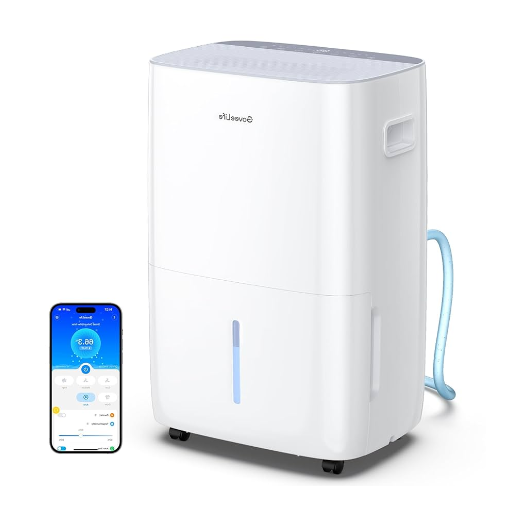
Cleaning Filters and Components
The filter should be clean for the dehumidifier to run efficiently and in good working condition. Most modern-day dehumidifiers have reusable air filters that trap dust, allergens, and other particles in the air. To wash, remove the filters from their place as per the manufacturer’s instructions and then run water over them or clean them gently with a soft brush to remove dust and debris. After washing, let the filters dry out completely in the air before putting them back into the dehumidifier so that moisture may not seep into it, thereby encouraging mold growth.
The dehumidifier has other parts that require regular cleaning aside from its filters. The water tank, which collects moisture, deserves special cleansing as it can become an excellent breeding ground for bacteria and mold if left uncleaned. Empty the tank regularly and give it a good rinse with mild detergent or disinfect it with a mixture of water and white vinegar. Dry the tank thoroughly before reinstalling it to avoid contamination. Also, remember to clean the intake and exhaust vents of the dehumidifier so that they don’t get clogged due to dust and dirt accumulation.
Proper cleaning of the filters and other components can increase the service life of the dehumidifier and ensure it retains optimum performance grade. This maintenance aids air quality, saves energy, and avoids costly repairs later on. This simple cleaning schedule will surely help reap the fullest benefits of the dehumidifier and keep the indoors healthy.
Emptying the Water Tank
Emptying the water tank of your dehumidifier acts as the primary routine to maintain efficient working for the machine and to prevent overflow problems. The tank may fill up quickly with adverse humidity conditions surrounding your premises. Keep oversight of the water tank indicator to know when to empty it. Most dehumidifiers have an auto-shutoff feature that turns the dehumidifier off once the tank is full to prevent spillage and possible harm to the dehumidifying unit.
To empty the tank, gently pull the tank off the dehumidifier, making sure not to spill water. Dispose of the water responsibly, as it may carry impurities and should never be used as drinking water. Check for dirt or mold buildup in the tank and clean it with mild soapy water if required. A clean tank inhibits bacteria growth and supports good air quality in your home. Following this, dry the tank well and fit it back onto the unit securely.
Many newer models offer a continuous drainage option, where you connect a hose to the dehumidifier, routing the water directly into a nearby sink or drain. This becomes particularly useful for spaces undergoing constant dehumidification, as it takes care of emptying for you. Nevertheless, do ensure some thought goes into setting this up so that you do not encounter leaks or blockages in your drainage line. Either way, consistently maintaining your water tank will ensure that your dehumidifier serves you well for the foreseeable future.
References
-
Improving the Energy Efficiency of Dehumidification Technology
- This study explores the applications and energy efficiency of dehumidification technologies.
-
Energy and Performance Impacts of Whole-House Dehumidifier Duct Configurations
- This research investigates the energy and performance impacts of ducted dehumidifiers.
-
Renewable Energy Applications in Residential Homes
- This paper includes insights into small-scale dehumidification processes and their energy implications.
Frequently Asked Questions (FAQ)
Q: What is the best small bathroom dehumidifier for high humidity levels?
A: The best small bathroom dehumidifier typically features a powerful yet compact design, effectively removing moisture from the air. Look for models with a capacity of around 10 pints or more, especially for bathrooms with high humidity levels.
Q: How does a mini dehumidifier work in small spaces?
A: A mini dehumidifier works by using either a refrigerant or desiccant method to absorb moisture from the air. In small spaces like bathrooms, these devices help lower humidity, preventing issues like condensation and bathroom mold. The compact design makes them ideal for areas up to 250 sq feet.
Q: Can I use a dehumidifier for my bathroom and laundry room?
A: Yes, using a dehumidifier for both your bathroom and laundry room can be very effective. High humidity in these areas can lead to mold and mildew. A powerful dehumidifier can help maintain desired humidity levels, making your spaces more comfortable and preventing damage.
Q: What should I consider when choosing the best dehumidifier for small bathrooms?
A: When selecting the best dehumidifier for small bathrooms, consider factors such as room size, capacity (pints per day), noise level, and features like continuous mode or sleep mode. A dehumidifier that operates quietly and efficiently will ensure comfort without disrupting your daily activities.
Q: Are desiccant dehumidifiers better for bathrooms than refrigerant ones?
A: Desiccant dehumidifiers can be more effective in bathrooms, especially in cooler temperatures where refrigerant models might struggle. They efficiently absorb moisture from the air without the need for a compressor, making them ideal for smaller spaces and lower humidity environments.
Q: How do I know if my dehumidifier is underpowered for my space?
A: If you notice persistent humidity or condensation on doors and windows, your dehumidifier may be underpowered for the size of your bathroom. Checking the manufacturer’s specifications for coverage area in square feet can help you determine if it meets your needs.
Q: What is the impact of humidity levels in your home?
A: High humidity levels in your home can lead to various problems, including mold growth, increased allergens, and discomfort. Using the best small bathroom dehumidifier can help maintain optimal humidity levels, improving air quality and overall comfort.
Q: What is the difference between a room dehumidifier and a moisture absorber?
A: A room dehumidifier actively removes moisture from the air using a compressor or desiccant, while a moisture absorber typically refers to passive methods like silica gel or activated charcoal. For effective humidity control in bathrooms, a room dehumidifier is more efficient.
Q: How can I enhance air circulation along with using a dehumidifier?
A: To enhance air circulation while using a dehumidifier, you can keep doors and windows slightly open when possible, use fans, and ensure that the dehumidifier is positioned well within the space for optimal airflow. This helps the dehumidifier work more efficiently in removing moisture from the air.

